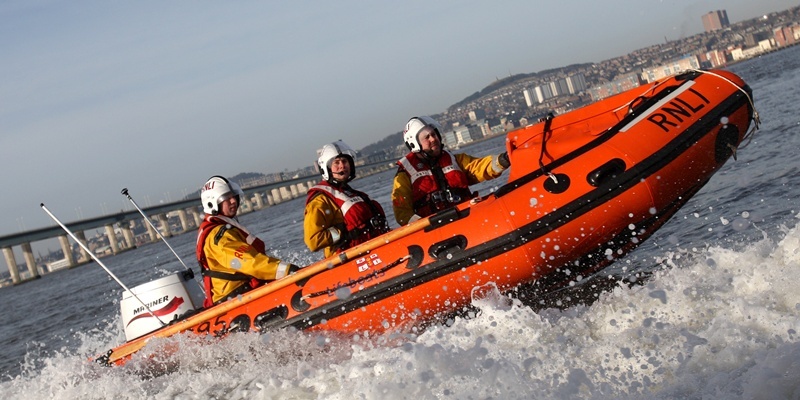They are the everyday heroes who help keep the coastline safe for us all.
The crew of the Broughty Ferry lifeboat may laugh and joke with one another as they sit inside their headquarters but everything becomes deadly serious the moment they take to the water.
When charged with the responsibility of saving lives in often treacherous conditions, nothing less than 100% focus will do.
And as Broughty Ferry has been confirmed as the busiest lifeboat station in Scotland in 2011, the dedication of this crew is tested more than any other in the land.
Despite the sacrifices they often have to make, saving lives has become a way of life for many in the team a fact perfectly illustrated by coxswain Murray Brown.
With 21 years’ experience on the Broughty Ferry boat, he knows his actions can be the difference between life and death.
”Every time the pager goes you know that someone is trouble,” he said. ”I was a volunteer at first but became full-time just over four years ago.
”Of course there are sacrifices but you take them as part of the job. I think the people of Broughty Ferry sees us as a part of their town. They see us out and about and know who we are and that’s nice.”
The crew were kind enough to take myself and Courier photographer Kris Miller, whose pictures you see here, out on the Tay in the larger Trent Class lifeboat.
Despite the perfect conditions, it is easy to imagine how hard it must be to conduct rescue work in even a slight breeze.
The first sensation to hit you is the noise, with the 860 horsepower produced by the twin diesel engines proving deafening at times.
That power is put to good use, however, with new propellers helping the vessel to reach speeds of up to 25 knots.
What was surprising was the feeling of stability as we made our way down the river. Fears of an unwelcome reunion with my breakfast were quickly allayed, allowing me to learn a little more about the crew and their reasons for volunteering.
Peter Hay has been saving lives on the Tay for 24 years. I asked him what goes through his head when the alarm is raised.
”I guess it’s a mixture of emotions concern, anticipation, even excitement in a strange way. It’s just good to give something back to the community though. I’ve got two young boys and I work in the Ferry as well so I do have responsibilities.
”My employer is very understanding though and that is fantastic.”
Although a sophisticated and modern service, simple traditions continue to be honoured by the Broughty Ferry RNLI team.
As we made our way back to terra firma a blue ribbon blew in the breeze from the station flagpole the sign of a new arrival in the family of a team member.
Thomas Graham Rentoul, born last week to crew member Donald and his partner Laura, already has an extended family at the lifeboat station it would appear.
That sense of unity will be equally important in what promises to be an equally hectic 2012.
The record-breaking year saw Broughty Ferry named as Scotland’s busiest lifeboat station in 2011.
Crews at the station were launched 104 times last year and spent 523 hours at sea attending to people in distress.
The two boats, an inshore inflatable and larger Trent Class all-weather boat, saved nine lives over the 12-month period and ensured the safety of countless others in some of the country’s most inhospitable waters.
Over a third of the launches took place in the hours of darkness with five missions conducted in gales in excess of force seven.
Including time spent on the water conducting training exercises, the Broughty Ferry boats spent 1,151 crew hours at sea.
Paul Jennings, the RNLI divisional inspector in Scotland, said: ”It is particularly notable that during December we had four spells of stormy weather with winds from force 10 to 12 and yet our crews still launched, as they always do whatever the weather.”
Around 20 lifeboats were launched each week in 2011 with 1,006 operations resulting in the rescue of 847 people in Scottish waters.
The Arbroath volunteers were scrambled on 31 occasions and the Montrose boat launched 20 times.
Lifeboats in Fife were busier still with the crews at Anstruther and Kinghorn taking to the water 41 times each, assisting 48 people.
